Proper Lumber Storage Techniques: Complete Guide
- August 21, 2024
- 0 comment
Storing lumber the right way is important to keep it in good shape and make sure it lasts. Wood can easily change if it’s exposed to moisture, heat, or poor air circulation, leading to problems like bending, cracking, or even rotting. Whether you’re an experienced woodworker or just doing projects at home, storing your wood correctly can help avoid these issues and keep it strong and usable.
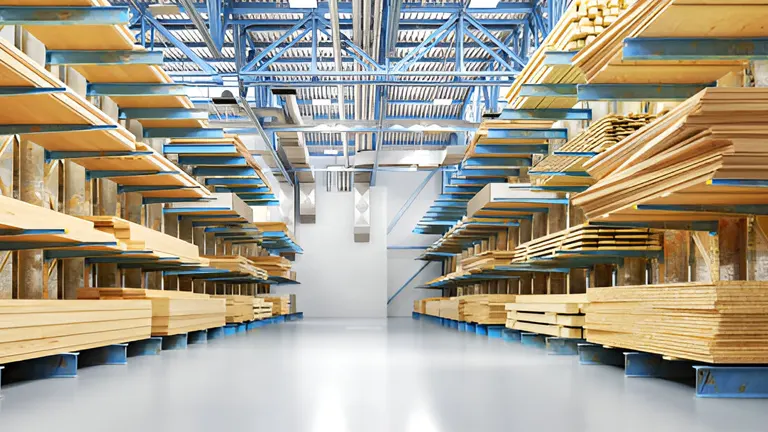
Good storage practices protect your wood from damage and make sure it’s ready when you need it. By paying attention to things like keeping the wood dry, avoiding extreme temperatures, and stacking it properly, you can make sure your lumber stays in great condition for any project you have in mind.
Table of Contents:
- Why Proper Lumber Storage Matters
- Key Factors in Lumber Storage
- Best Practices for Lumber Storage
- Storing Lumber in Different Environments
- Dealing with Different Types of Wood
- Additional Tips for Long-Term Lumber Storage
- Conclusion
- Frequently Asked Questions
Why Proper Lumber Storage Matters
Proper lumber storage is important because wood is a natural material that reacts to the environment around it. If lumber absorbs too much moisture from the air, it can swell, warp, or even rot over time. On the flip side, if wood dries out too much, it can crack or split, making it less useful for your projects.
Storing lumber correctly helps keep its moisture levels balanced, which prevents these problems. By maintaining this balance, the wood stays strong and in good shape, ready to be used whenever you need it. Proper storage ensures that your lumber remains in the best condition possible, whether you’re planning a big project or just keeping it for later use.
Key Factors in Lumber Storage
Several factors play a role in how well your lumber is preserved during storage. Understanding these factors can help you make informed decisions about how and where to store your wood.
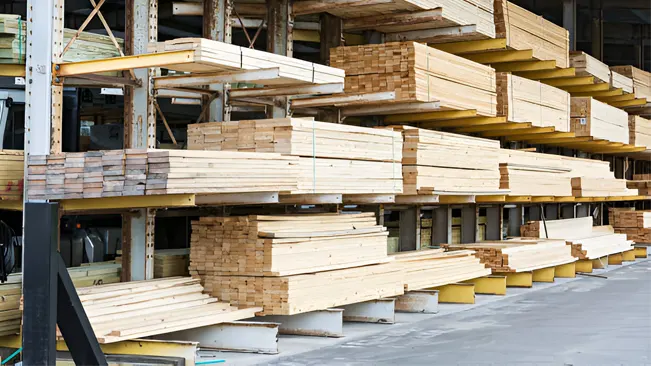
1. Moisture Control
Moisture is the most significant factor affecting lumber. Wood can absorb or lose moisture depending on the humidity of its surroundings. Ideally, lumber should be stored in a dry, well-ventilated area with stable humidity levels. If you’re storing wood in a location prone to high humidity, consider using a dehumidifier to maintain the proper moisture level.
2. Temperature Regulation
Extreme temperature fluctuations can cause wood to expand and contract, leading to warping or splitting. Store your lumber in a temperature-controlled environment whenever possible. Avoid places that experience rapid temperature changes, such as attics or unheated garages.
3. Proper Air Circulation
Good air circulation around your lumber is essential to prevent moisture buildup. When stacking lumber, make sure there is space between each board to allow air to flow freely. This helps keep the wood dry and prevents mold or mildew from forming.
4. Flat and Level Support
Lumber should always be stored on a flat and level surface to prevent it from bending or bowing over time. Use sturdy supports or racks to keep the wood off the ground and ensure it’s evenly supported along its entire length.
Best Practices for Lumber Storage
Now that you understand the key factors in lumber storage, let’s explore some best practices to keep your wood in top condition.

1. Stacking Lumber Correctly
When stacking lumber, it’s crucial to keep the boards flat and level. Start by placing a set of 2x4s or other sturdy supports on the ground, spaced about 18-24 inches apart. Lay the first layer of boards on top of these supports, ensuring they are aligned and evenly spaced. Place additional layers of boards on top, using small spacers (also known as stickers) between each layer to allow air circulation.
Remember to alternate the direction of the boards with each layer to balance the stack and reduce the risk of warping. For example, if the first layer runs lengthwise, the next layer should run widthwise.
2. Using a Lumber Rack
A lumber rack is an excellent investment for those with limited floor space or who frequently work with wood. These racks are designed to hold boards horizontally, keeping them flat and off the ground. Most lumber racks are wall-mounted and come with adjustable arms, allowing you to customize the storage for different lengths and thicknesses of wood.
When using a lumber rack, ensure the arms are spaced close enough to support the weight of the wood without causing it to sag. Heavier or longer boards may require additional support.
3. Protecting Lumber from the Elements
If you need to store lumber outdoors, take extra precautions to protect it from the elements. Cover the stack with a waterproof tarp, but avoid wrapping it too tightly, as this can trap moisture and lead to mold or rot. Ensure the tarp is securely fastened but still allows for some air circulation.
Elevate the stack off the ground using pallets or cinder blocks to prevent moisture from seeping in from below. Place the stack in a shaded area to reduce the impact of direct sunlight, which can cause the wood to dry out too quickly and lead to cracking.
4. Rotating Your Stock
If you’re storing lumber for an extended period, it’s a good idea to rotate your stock periodically. This means moving the boards on the bottom to the top of the stack and vice versa. Rotating helps ensure even air circulation and prevents any single board from bearing too much weight for too long, which could cause it to warp.
Storing Lumber in Different Environments
Depending on where you plan to store your lumber, you may need to adjust your storage techniques to account for environmental factors. Here’s a closer look at how to store lumber in various settings.
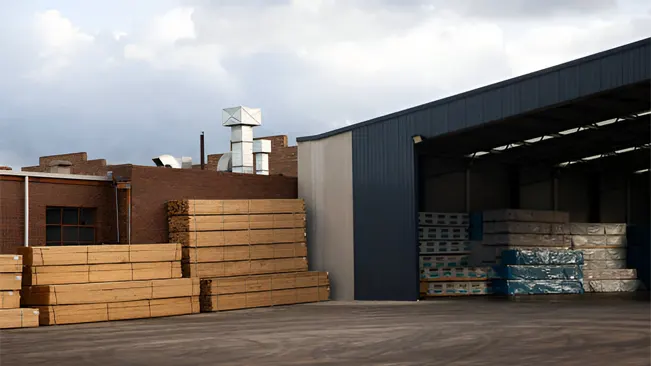
Indoor Storage
Indoor storage is the best option for preserving lumber, especially if you have a climate-controlled workshop or garage. When storing lumber indoors, make sure the space is well-ventilated to prevent moisture buildup. Avoid placing lumber directly on the floor, as concrete can transfer moisture to the wood. Instead, use lumber racks or elevate the boards on wooden supports.
It’s also essential to maintain consistent humidity levels. Sudden changes in humidity can cause the wood to expand or contract, leading to warping. A hygrometer can help you monitor the humidity levels in your storage area, and a dehumidifier or humidifier can be used to keep the environment stable.
Outdoor Storage
Outdoor storage presents more challenges due to exposure to the elements. If you must store lumber outside, take extra precautions to protect it from moisture and sunlight. As mentioned earlier, use a waterproof tarp to cover the wood, but ensure there’s adequate ventilation to prevent moisture buildup.
Additionally, store the lumber in a location that’s sheltered from direct rain and sun. A covered porch, carport, or shed can provide some protection. Be sure to stack the lumber off the ground on a level surface to prevent water absorption from the soil.
Temporary vs. Long-Term Storage
The duration of storage also affects how you should store your lumber. For temporary storage (a few days to a few weeks), focus on keeping the wood dry and off the ground. You may not need to be as meticulous with stacking, but you should still ensure proper air circulation.
For long-term storage (months or years), more careful planning is needed. Use proper stacking techniques with spacers between each layer of boards. Consider sealing the ends of the boards with a wax-based sealant to prevent moisture from entering and causing the wood to crack. Additionally, monitor the storage environment regularly to ensure that conditions remain stable.
Dealing with Different Types of Wood
Different types of wood have specific storage needs based on their natural characteristics. Understanding how to store each type of lumber properly can help you keep it in good condition and avoid common problems like warping or insect damage.
Hardwoods like oak, maple, and walnut are generally more stable than other types of wood, meaning they are less likely to warp. However, they still need to be stored with care. Hardwoods should be kept in a controlled environment where the humidity levels remain consistent. This is especially important because hardwoods are often more expensive, and improper storage could lead to costly damage. By maintaining the right conditions, you can protect your investment and ensure the wood remains in top shape for future use.
Softwoods such as pine, cedar, and fir are more prone to warping and swelling because they have a higher moisture content. To store softwoods correctly, keep them in a dry, well-ventilated area. It’s also important to check them regularly for signs of pests, especially if you store them outside. Insects can cause significant damage to softwoods, so catching any problems early can save your wood from ruin.
Pressure-treated lumber is made to withstand rot and insect damage, making it a good choice for outdoor projects. However, even though it’s treated, this type of wood still needs proper storage. To prevent warping, store pressure-treated lumber off the ground and cover it loosely with a tarp. This will protect it from moisture while allowing air to circulate, keeping the wood in good condition until you’re ready to use it.
Additional Tips for Long-Term Lumber Storage
If you plan to store lumber for a long time, here are some simple tips to keep your wood in good shape:

- Label Your Lumber
- If you have different types and sizes of wood, label each stack with details like the wood species, grade, and date of purchase.
- This helps you track what you have and ensures you use older wood first, preventing it from drying out or aging too much.
- Inspect Regularly
- Check your stored lumber from time to time for signs of damage, like warping, cracking, mold, or insect problems.
- Catching these issues early lets you fix them before they get worse and ruin the wood.
- Store Small Offcuts Separately
- Smaller pieces of wood, known as offcuts, can be tricky to store with larger boards.
- Use a separate bin or rack for these offcuts, and organize them by size and type. This keeps your storage area tidy and makes it easier to find the right piece when you need it.
Conclusion
Proper lumber storage is essential for preserving the quality of your wood and ensuring it remains ready for use in your projects. By controlling moisture, temperature, and air circulation, and by stacking your lumber correctly, you can prevent common issues like warping, cracking, and mold growth. Whether you’re storing wood in a workshop, garage, or outdoors, following these best practices will help keep your lumber in top condition for years to come.
Whether you’re working with hardwoods, softwoods, or pressure-treated lumber, adapting your storage methods to the specific needs of each type of wood will further enhance the longevity and usability of your materials. By taking the time to store your lumber properly, you’ll be rewarded with high-quality wood that’s ready to perform in any project you undertake.
Frequently Asked Questions
1. Why is proper lumber storage important?
Proper lumber storage is crucial to prevent issues like warping, cracking, and mold. It helps maintain the wood’s quality and usability, ensuring it stays in good condition for future projects.
2. How should I store lumber to prevent warping?
To prevent warping, store lumber flat and level on a sturdy surface, use spacers between layers for air circulation, and keep it in a controlled environment with stable humidity and temperature levels.
3. Can I store lumber outside?
Yes, you can store lumber outside, but it requires extra precautions. Cover the wood with a waterproof tarp, elevate it off the ground, and ensure there is proper air circulation to prevent moisture buildup.
4. What is the best way to store hardwoods?
Hardwoods should be stored in a dry, temperature-controlled environment with consistent humidity levels. Use proper stacking techniques and ensure the wood is well-supported to avoid warping.
5. How do I protect softwoods from insect damage?
Store softwoods in a well-ventilated area and regularly inspect them for signs of pests. If storing outdoors, consider treating the wood with an insect repellent or using a protective cover to minimize exposure to insects.
6. Is it necessary to label stored lumber?
Yes, labeling your lumber with details like species, grade, and date of purchase helps you manage your inventory and ensures you use older wood first, preventing it from becoming too dry or aged.
7. How often should I inspect stored lumber?
It’s recommended to inspect stored lumber periodically, at least once every few months, to check for signs of damage such as warping, cracking, mold, or insect infestations.
8. What are the best conditions for long-term lumber storage?
The best conditions for long-term lumber storage include a dry, well-ventilated area with stable temperature and humidity levels. Proper stacking and regular inspections also help maintain the wood’s quality over time.
9. Can pressure-treated lumber be stored indoors?
Yes, pressure-treated lumber can be stored indoors. However, it should still be kept off the ground and in a well-ventilated area to prevent any moisture-related issues.
10. How should I store small wood offcuts?
Small wood offcuts should be stored separately from larger boards, preferably in a dedicated bin or rack. Organize them by size and type to keep your storage area tidy and make it easier to find the pieces you need for smaller projects.
We hope this guide on proper lumber storage techniques has provided you with valuable insights to keep your wood in top condition for your projects. Whether you’re a seasoned woodworker or just starting out, knowing how to store lumber correctly is crucial for maintaining its quality and usability.
If you have experiences or tips related to storing lumber, please share them in the comments below. Your input can help others in the woodworking community preserve their materials and avoid common pitfalls. Also, don’t forget to share this article with fellow woodworkers, builders, and DIY enthusiasts to spread knowledge about this important aspect of the craft. Happy woodworking!

Edward Smith
Forestry AuthorWoodworking is about more than crafting; it's a harmonious connection with nature, mastering tools, and preserving our environment. I'm here to share my knowledge and experiences with you, forging a future where we can embrace wood's beauty and utility while safeguarding our forests' health and diversity.


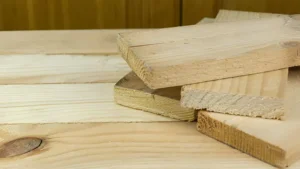




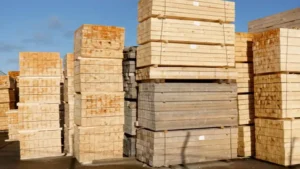
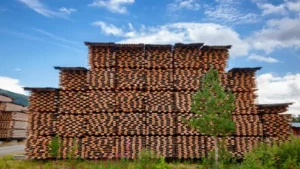
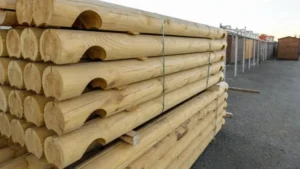
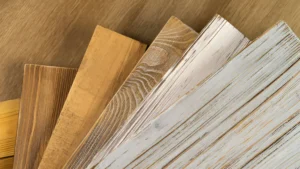
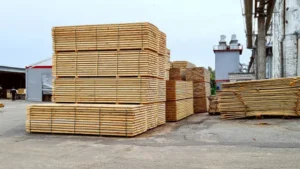

Leave your comment